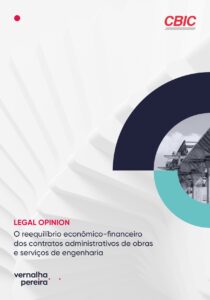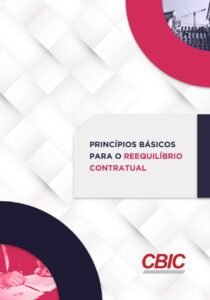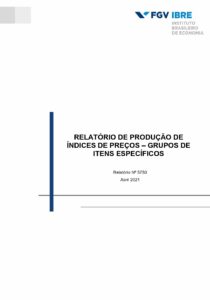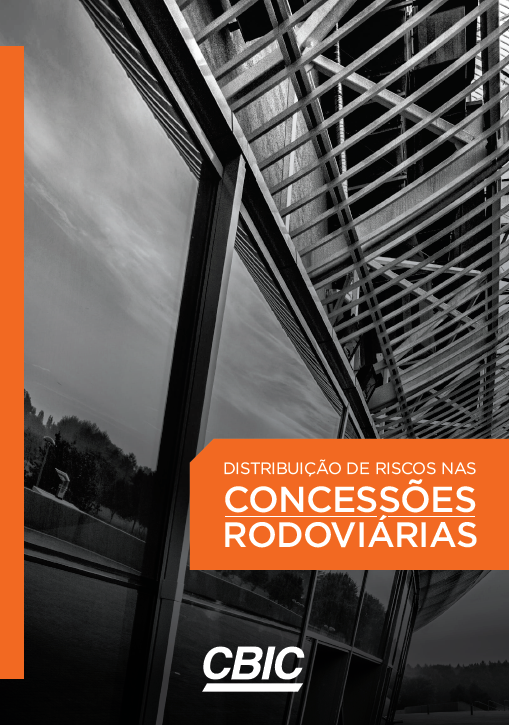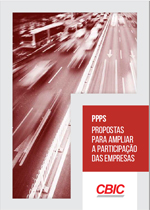
Position Paper Medium-Sized Companies


The content of this document represents the institutional position of CICA — Confederation of International Contractors’ Associations — related to broadening the market share of Medium-Sized Companies in the infrastructure sector. CICA understands that opening the infrastructure market to medium companies can enhance the quality of infrastructure programs and public services in addition to bringing savings to public administrations. In such purpose, CICA has built some recommendations and policy actions that can support governments and relevant international organizations to address this issue.
General CICA recommendations
The recommendations aim at promoting (i) a greater legal and regulatory certainty related to the public procurement and structuring of infrastructure projects; (ii) the development of municipal markets related to infrastructure; (iii) the splitting of large-scale projects in small lots when that is technically feasible and economically advantageous; (iv) a broader MSC’s participation in consortia, in public procurement and in PPPs; and (v) to allow, by contracts adapted to the MSC but neglected by the main international contractors, the dissemination of the beneficial effects of the structuring infrastructure to which the majors of the construction industry should bring more support.; (vi) alternative ways of dispute resolutions, such as arbitration; and (vii) the adoption by MSC of high standards of corporate governance, including effective compliance.
Context
Medium-sized companies play an important role in the economic growth around the world. They are considered a key driver in boosting economic development and increasing job creation, especially in emerging countries. According to the World Bank[1], formal Small and Medium Enterprises (SMEs) contribute up to 60% of the total employment and up to 40% of the national income (GDP) in developing economies.
However, in spite of their recent relevance in economic growth, their market share in the area of infrastructure is still very restricted. Infrastructure projects are usually large-scale projects, and this has prevented medium-sized companies from accessing the infrastructure market. These companies often do not have the significant size to meet the requirements demanded for those projects, and thus remain out of the bidding process. As a result, the infrastructure market, at large, has been explored quasi exclusively by large companies, even though some of the operations could be performed by smaller companies.
CICA understands medium-sized companies can play a more relevant role in the infrastructure market. By broadening their participation in this market, three important objectives could be achieved at the same time.
First, public administrations could achieve better deals, thus saving public resources. Encouraging medium-sized companies’ participation in those projects can increase fair competition and the efficiency of the bidding process, increasing the chances for a better deal for public administrations (funded by tax payers) and for the users of public services.
Second, the increase in their participation in the infrastructure market can contribute to macroeconomic development, given the relationship between the development of smaller companies and economic growth. MSCs are bound to demonstrate a high and rapid ability to adapt to technical and economic developments in the various construction markets. To achieve this they demonstrate creativity and innovation which is, however, not sufficiently acknowledged.
Third, by sharing the infrastructure market with a larger number of companies, instead of a more restricted market, a better distribution of wealth can be achieved.
Those objectives are relevant enough to justify efforts towards the creation of policies focused on fostering a greater and efficient participation of medium-sized companies in the infrastructure market.
Given that, CICA, through its Market Access for Medium-sized Companies Working Group, has developed some recommendations and policy actions, presented below, aiming to contribute to the efforts of governments, public institutions, as well as international organizations committed to the development of the infrastructure market and economic growth worldwide.
Criteria to define a Medium-Sized Company for the purposes of this paper
In order to guide the recommendations and policies proposed ahead, CICA understands it is important to present a definition of a Medium-Sized Company. Some definitions of SMEs – Smaller and Medium Enterprises — are found in relevant policy papers prepared by development banks such as the World Bank, or international organizations such as the OECD, and in the European regulation. But all of them are oriented to SMEs development in general economies, what makes them unhelpful to the purposes of the recommendations offered below, which focus on the infrastructure market. It is noteworthy that the infrastructure market usually comprises a type of business that demands high level investments, requiring high level qualification from the market players. That’s why the notion of Small or Medium Enterprises for infrastructure market purposes tends to be different from that of a broader market context. A Medium-Sized Company in the context of the infrastructure market is usually bigger and financially stronger than a medium company in a broader market context.
CICA understands that companies’ equity capital would be a suitable criterion to build a definition of Medium-Sized Companies under the context of those Recommendations. Taking into account the recommendations below and what has been gathered from the infrastructure market worldwide, the range of estimated values for projects suitable for medium-sized companies would be between U$ 50 million and U$ 250 million. As the companies’ available economic capacity is usually based on their equity value, defined as 15% of each project’s worth, the reference in equity value for these projects goes from U$ 7.5 to U$ 37.5 million. Considering, still, that half of this value may be consumed in equivalent projects, it is expected that companies intending to have access to these projects possess an equity value around 30% of the project’s worth, which translated to a minimum equity capital of U$ 15 million.
With that in mind, medium-sized companies for the purposes of the recommendations below would be those possessing a minimum equity capital of U$ 15 million and a maximum of U$ 75 million. It is important to highlight that these criteria are built on an average basis. They can be adapted depending on the reality of each of the countries, on their GDP and other economic parameters.
Recommendation #1:
Improving the legal and regulatory framework and institutional environment for the development of international infrastructure programs, as well as the participation of Medium-Sized Companies in it.
Governments and their institutions should encourage and ensure a greater level of legal certainty, and stable and long-term regulatory policies, related to the infrastructure businesses. This initiative is critical for bringing more investments to infrastructure projects, especially those coming from international funding, and also for promoting greater efficiency in those projects. By improving the level of legal certainty and regulatory stability, transaction costs are reduced, making programs less costly. This efficiency tends to benefit both users and governments (tax payers), depending on the funding of the contracting source.
1.1. Ensuring a long-term and technically rational regulation policy for strategic sectors such as sanitation, urban mobility and public lighting, aimed at promoting PPP programs in decentralized and local governments, especially in cities
Governments and their institutions should establish long-term regulatory policies for infrastructure projects. That means a technically rational, clear and sufficiently detailed regulation should be created before the PPP and concession programs are launched. Regulation must prevent too great a margin for discretionary public decisions on relevant issues related to the projects. The rules regarding the main issues of the infrastructure sector related to the project should be previously established and as much detailed as possible. The goal in improving the level of accuracy and detail in regulation is to reduce the risk of irrational political influence over the projects, providing greater security to investors and financial supporters.
It is also critical to have effective channels to understand the rules and their technical issues, and for enforcement and compliance.
1.2. Involving external controllers and financing in the preparation stage of the PPP program, in order to reduce legal uncertainty during the contract’s lifecycle
Governments and their institutions should develop channels to bring controllers and financial institutions to the preparation phase of the infrastructure projects. By providing a good level of information to those entities, and allowing them the possibility of interacting and interfering in the project’s foundations, the chances of non-approval of financing tend to be reduced, as well as related financing costs which can represent a surplus up to 20% of the amount of the initial forecast.
Regarding financial support, governments should consider creating bridges to facilitate interaction between investors and project promoters, through internet portals where solid information can be accessed and proposals for the improvement of a project’s foundations can be made. A good example is the European Investment Project Portal (EIPP), which publishes projects coming from promoters in order to function as a bridge between investors and project contractors. Although the EIPP is not intended to replace the due diligence process over the projects that are submitted to it, there are criteria for considering them as a project to be published and visible to the (international) investors. It has functioned as an effective channel to make good and viable projects visible to the investors[2].
Regarding controller interference, which is an issue in countries where controllers can play a more invasive role during the contract life cycle, it is important to bring them in the preparation stage of the projects, reducing the chances of supervening interferences during the contract life. This can be achieved by means of official channels created to facilitate the interaction between the controllers and the project holders (usually, public administrations). It is important to remember that the risk of external interferences over the contract during its execution increases project costs. This is why it could be good, for the purpose of decreasing a project’s costs, to bring it closer to the controller’s perspective.
Nevertheless, it is important to mention that these channels and bridges which can be developed for these purposes, although very useful, are not sufficient to encourage high quality projects and to enhance a greater participation of smaller companies. The proper preparation of projects by the public body is an essential factor for expanding the participation of medium companies, as it is described below.
1.3. Establishing independent agencies to exercise the regulation, supervision and contracts management
The relevant contracting issue, including the technical regulation and its oversight, should be addressed by independent and technically-prepared agencies. The role of these agencies can be even more relevant in small administrations, which can provide smaller and more suitable projects for medium-sized companies. In many cases, small public administrations do not have enough capability for building infrastructure projects or providing technically rational regulation regarding the respective sector of public service.
In many cases, creating the agency will be much more costly for the governments, in a context of fiscal restrictions. Therefore, this option could be unfeasible. One alternative is to enable the hiring of technically qualified and independent advisors to support the administrations in this matter, including measuring periodically the outputs and the results of the PPP contracts. This point is relevant because unfortunately, more often than ever, we notice the political capture of contracts. That’s why it is recommended that this recruitment be carried out under a charter ensuring the independence and professionalism of the consultant.
In order to address the lack of public administrations’ assistance in building projects and its regulation, specific ways to contract consultants in a less bureaucratic way should be developed.
Recommendation #2:
Stimulating municipal markets for PPPs and ensuring high quality projects, in order to enable the engagement of medium-sized companies in public services through PPPs.
A municipal market for concessions and PPPs should be pursued by public and private institutions as a way to develop local public services and to stimulate a broader participation of Medium-Sized Companies in these businesses. Given the international experience with these types of contracts, concessions and PPPs tend to be a more efficient form of building local infrastructure and providing local public services in comparison to the conventional contracting. In addition, the development of a municipal market can promote a greater participation of MSC in concessions and PPPs projects, since municipal projects, given their size and their dimension, tend to be more suitable for smaller companies. However, local administrations, in most cases, do not have enough experience or expertise in structuring long-term contracts such as concessions and PPPs. That is why it is critical to support public and private entities in helping municipalities to structure these projects.
2.1. Encouraging the creation of bodies focused on developing infrastructure projects, diffusing good PPP practices and providing standards for relevant documentation related to structuring PPP and concession projects, so as to assist public entities (particularly, the municipalities) to conduct PPP programs
The central government and its institutions should develop and reinforce a technical and institutional support policy for subnational public entities, which are usually not in capacity of developing such programs. Especially in countries where the Unsolicited Proposals procedure has been widely used as a tool for structuring PPP projects. Since public entities lack expertise and knowledge, they are often unable to advance procedures and eventually die. The asymmetry of the information and of the knowledge which remains between subnational entities which are insufficiently staffed represents a risk. The risk lies in not taking into consideration the public interest. That is why it is important to assist municipalities in structuring PPPs, which can be done by creating specialized bodies and providing toolkits with the standard documentation demanded by the process. These municipalities must be able to rely on an institutional and legal framework which governs the traditional procurement concession as well as PPP concessions. In this regard, the norms and standards have a supplementary character and have to enhance a good interpretation of the institutional and legal frameworks. This ensures the legibility, stability and safety of the contractual framework of the MSC’s. The public and private entities are thus immune from inappropriate political or commercial interests.
Public entities could be created or allocated to provide technical and institutional support for such smaller Public Administrations to lessen or reduce those risks, and consequently help them to conduct technical analyses and make decisions related to unsolicited proposal procedures, thus creating and providing these subnational entities with sets of drafts and bills, decrees, public notices and contracts. This approach not only facilitates the development of these programs, but also helps to control them. It is worth mentioning that many countries face the problem of legal uncertainty related to contracts and biddings. Long-term contracts need proper legal certainty to be effective. Therefore, making these projects more accessible to controllers is a way to strengthen the legal certainty of contracts. In addition, the government and its institutions should support municipalities, providing PPP training programs and the standardization of the fundamental documentation, such as contract drafts and basic regulatory documents (toolkit)[3].
Recommendation #3:
Encouraging large-scale projects to be split up into smaller parts when it is economically advantageous and technically feasible.
PPP and concession contracts designers should consider splitting large-scale projects in smaller parts, in order to promote greater competition in the bidding process, allowing a broader participation of smaller companies. If the project fractionating is technically feasible, it should be encouraged in cases where the gains derived from better competition overcome the economy of scale losses. This analysis should consider the external positive effects that can be generated by the development of the market of medium-sized companies.
By reducing the quantity dimension of the projects, the bidding requirements tend to be reduced, broadening the participation of medium-sized companies. The smaller the bidding requirements, the larger the amount of bidding players, increasing the efficiency of the tender process. Therefore, a greater number of bidders can contribute to a better deal for the public administration (tax payers) as well as users. It is important to mention that the split of large-scale projects is a way to reduce the quantitative requirements, but not the qualitative
requirements, which should always be stablished in order to assure a great performance of the contract execution.
If the contracting management and the scope integration are well planned, splitting the project can also save time on the contract execution. Besides, a quota of participation of medium companies in public tenders would be considered as a floor.
Recommendation #4:
Allowing and encouraging the participation of smaller companies through consortia in PPP projects:
(i) customizing legal and regulatory conditions to facilitate the participation in a consortium and to favor a tax-friendly regime, creating tax incentives as deductibility, spread rhythm, tax-deductible provisions, depreciation/amortization rates, etc.;
(ii) allowing the setup of consortia between players with different expertise, and
(iii) promoting and facilitating the association between international and local companies.
CICA understands consortia are a relevant and effective tool to enable Medium-Sized Companies to access infrastructure projects. Through consortia, MSC are able to take place in those projects by means of association with other companies. Besides, by favoring the participation of consortia, especially in larger project bid processes, there is greater competition, and contracts become less costly.
In this regard, governments and their institutions should establish a legal framework for public procurement that facilitates the participation of small companies in a consortium. There are, at least, two important issues that have to be considered in the consortium regulation regarding public procurements.
The first one is related to the possibility of association between heterogeneous businesses, which may make it easier for MSC to take part in infrastructure projects. By allowing in public tenders consortia formed by companies of different expertise and market sectors, the association between smaller companies will be fostered, enabling them to meet technical and financial requirements demanded by the infrastructure bidding process.
The second one regards a desirable partnership between international and national companies in order to take part in public tenders and to execute infrastructure projects, which are strongly encouraged by the OECD. This kind of partnerships tends to be strategic for international players. The asymmetry information between them and local enterprises can be reduced if they are supported by a local partner. It also can make contracts less costly, as costs derived from the lack of understanding about local issues related to the business project will be avoided. Besides, stimulating partnerships and the association between international and local companies should be a way of inserting medium-sized local companies in large-scale infrastructure business.
Recommendation #5:
Encouraging alternative methods of dispute resolution, such as dispute boards and arbitration.
It has been noticed that one of the most critical aspects involved in long-term contracting is the dispute resolution method. This is particularly critical for medium-sized companies, which usually are not prepared to face the temporal and material costs of long disputes. It is known that usually the judicial system tends to be slower and less efficient than private means of conflict resolution. Besides, the effectiveness of the judicial system tends to vary more from one country to another in relation to private methods such as arbitration. With that in mind, governments and their institutions should establish a regulatory framework which favors the use of arbitration as well as other techniques of conflict resolution, such as dispute boards.
Recommendation #6:
Encouraging the improvement of corporate governance standards from internationally demanding references of good practices, including establishing policies for effective compliance, in order to promote better access for insurance and financing, and developing the associative capacity of businesses in order to facilitate the configuration of consortia.
Governments and their institutions should encourage the adoption by MSC of high standards of corporate governance, including effective compliance, which is widely disseminated by International Organizations, like OECD, MDBs/DFIs and NGOs such as Transparency International. By following high standards of corporate governance, these companies are able to access financing and insurance demands for infrastructure projects. Regarding this matter, certain actions can be taken, including (i) the diffusion of the culture of good governance standards through workshops and guides, and the interaction with insurers and financers of the infrastructure sector; (ii) the diffusion of good compliance practices through seminars, guides, etc., and the development of certification bodies for good compliance practices, thus avoiding the use of such integrity programs for merely formal purposes.
[1] http://www.worldbank.org/en/topic/smefinance.
[2] See CICA Long Term Infrastructure Financing Position Paper.
[3] It’s interesting to mention the SOURCE, a platform in a form of cloud-base software, provided by Sustainable Infrastructure Foundation (SIF) – a joint initiative from Multilateral Development Banks -, dedicated to support governments and multilateral organizations in developing infrastructure projects. It seems to be a power tool to improve project preparation, that can be accessible by countries from all of the world.



